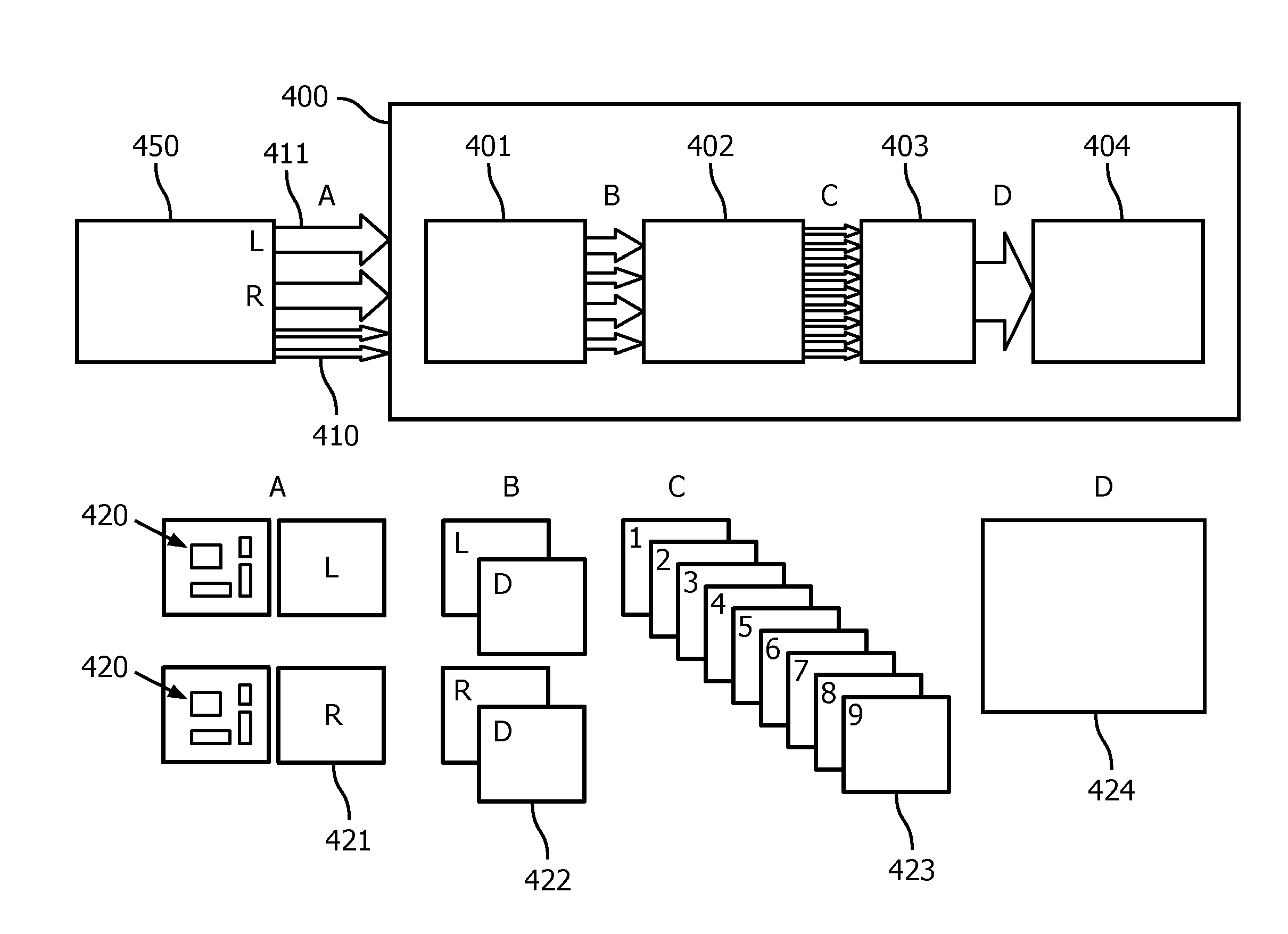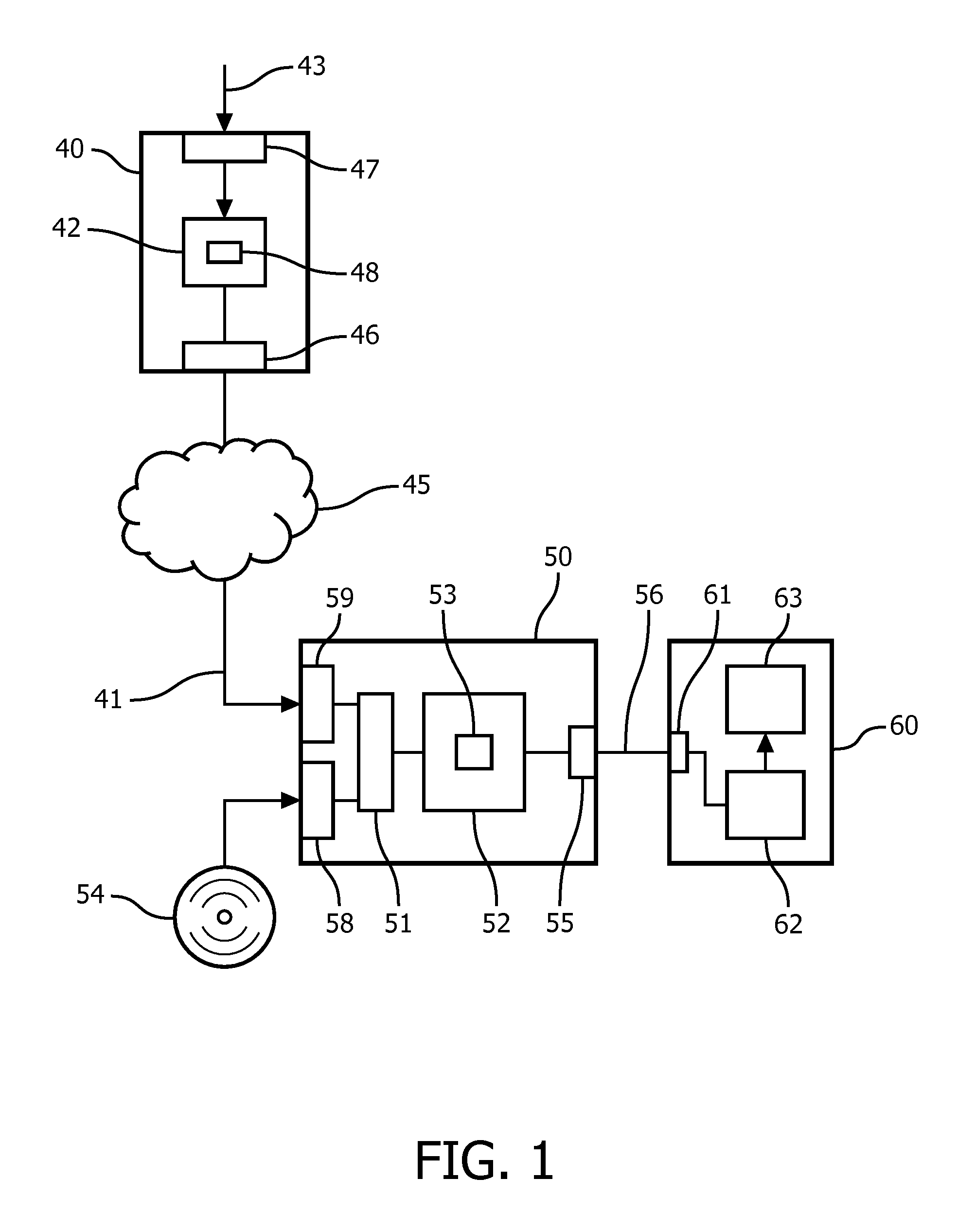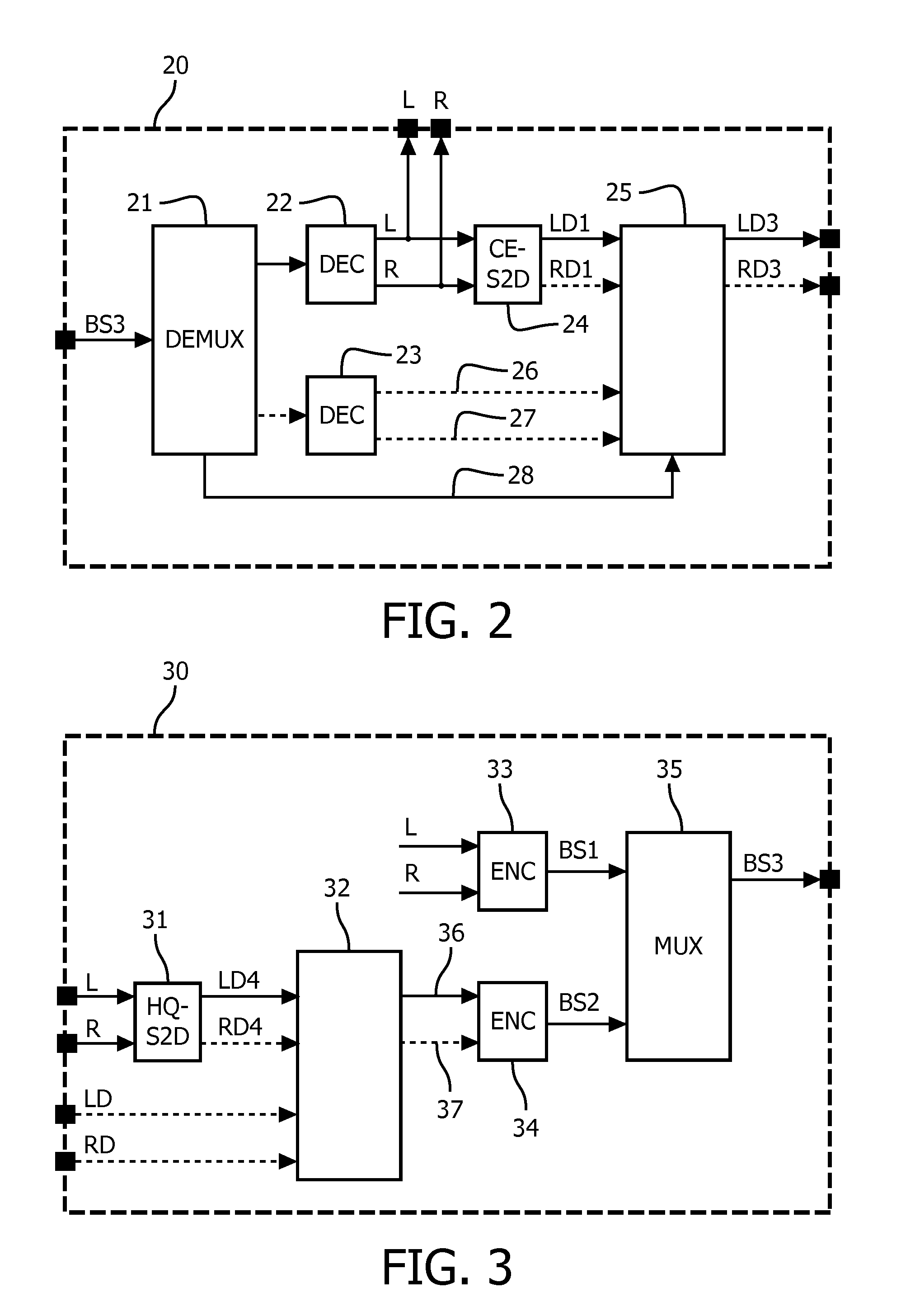Metadata for depth filtering
a technology of depth filtering and metadata, applied in the field of video source devices, can solve the problems of low quality of depth data generated at the destination, data transmission capacity, etc., and achieve the effects of enhancing the 3d effect, enhancing the processing of destination depth data, and enhancing the destination depth data
- Summary
- Abstract
- Description
- Claims
- Application Information
AI Technical Summary
Benefits of technology
Problems solved by technology
Method used
Image
Examples
example filters
[0153 and location data for practical use include:
[0154]Temporal median filter over N frames;
[0155]Spatial median / maximum / minimum filter over M×N pixels;
[0156]Gaussian blur filter over M×N pixels;
[0157]Gaussian blur filter with a 1D kernel, of which the filter direction may be in horizontal, vertical, or in a specific direction (indicated by an angle);
[0158]Thresholding filter, to apply a threshold to a fixed value or a set of fixed values;
[0159]Bilateral grid filter and an object mask (e.g. for graphics objects);
[0160]Gain and / or offset filtering within a specified filter area;
[0161]Geometric areas to be used, e.g. in bilateral depth filtering (such as replacing luma in cross luma-depth bilateral filter where these geometries are defined).
[0162]Index parameters associated with each geometric area can be used to identify objects. Identifying objects enhances depth processing for graphics overlays where it is normally difficult to do accurate depth estimation.
[0163]The above filters ...
PUM
 Login to View More
Login to View More Abstract
Description
Claims
Application Information
 Login to View More
Login to View More - R&D
- Intellectual Property
- Life Sciences
- Materials
- Tech Scout
- Unparalleled Data Quality
- Higher Quality Content
- 60% Fewer Hallucinations
Browse by: Latest US Patents, China's latest patents, Technical Efficacy Thesaurus, Application Domain, Technology Topic, Popular Technical Reports.
© 2025 PatSnap. All rights reserved.Legal|Privacy policy|Modern Slavery Act Transparency Statement|Sitemap|About US| Contact US: help@patsnap.com



